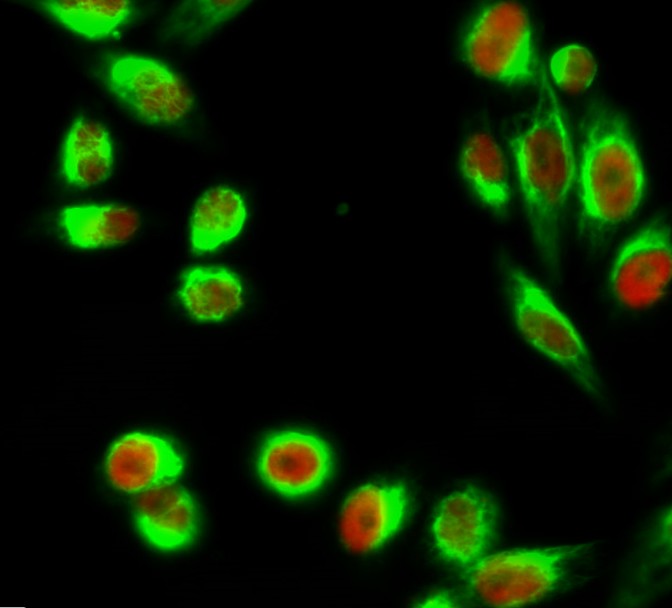Phospho C/EBP β (T235) Cell-Based Colorimetric ELISA Kit
- Catalog No.:KA1043C
- Applications:ELISA
- Reactivity:Human;Mouse;Rat
- Gene Name:
- CEBPB
- Human Gene Id:
- 1051
- Human Swiss Prot No:
- P17676
- Mouse Swiss Prot No:
- P28033
- Rat Swiss Prot No:
- P21272
- Storage Stability:
- 2-8°C/6 months
- Other Name:
- CCAAT/enhancer-binding protein beta (C/EBP beta) (Liver activator protein) (Nuclear factor NF-IL6) (Transcription factor 5) (TCF-5)
- Detection Method:
- Colorimetric
- Background:
- function:Important transcriptional activator in the regulation of genes involved in immune and inflammatory responses. Specifically binds to an IL-1 response element in the IL-6 gene. NF-IL6 also binds to regulatory regions of several acute-phase and cytokines genes. It probably plays a role in the regulation of acute-phase reaction, inflammation and hemopoiesis. The consensus recognition site is 5'-T[TG]NNGNAA[TG]-3'.,PTM:Sumoylated by polymeric chains of SUMO2 or SUMO3.,similarity:Belongs to the bZIP family.,similarity:Belongs to the bZIP family. C/EBP subfamily.,similarity:Contains 1 bZIP domain.,subunit:Binds DNA as a dimer and can form stable heterodimers with C/EBP alpha, delta and gamma. Interacts with TRIM28 and PTGES2.,tissue specificity:Expressed at low levels in the lung, kidney and spleen.,
- Function:
- in utero embryonic development, regulation of cytokine production, placenta development, embryonic placenta development, acute inflammatory response, transcription, transcription, DNA-dependent, regulation of transcription, DNA-dependent, regulation of transcription from RNA polymerase II promoter, transcription from RNA polymerase II promoter, anti-apoptosis, induction of apoptosis, defense response, acute-phase response, inflammatory response,immune response, response to wounding, embryonic development ending in birth or egg hatching, positive regulation of biosynthetic process, positive regulation of macromolecule biosynthetic process, positive regulation of macromolecule metabolic process, positive regulation of gene expression, regulation of cell death, positive regulation of cell death, induction of programmed cell death, neuron differentiation, positive regulation of cellular bios
- Subcellular Location:
- Nucleus . Cytoplasm . Translocates to the nucleus when phosphorylated at Ser-288. In T-cells when sumoylated drawn to pericentric heterochromatin thereby allowing proliferation (By similarity). .
- Expression:
- Expressed at low levels in the lung, kidney and spleen.
- June 19-2018
- WESTERN IMMUNOBLOTTING PROTOCOL
- June 19-2018
- IMMUNOHISTOCHEMISTRY-PARAFFIN PROTOCOL
- June 19-2018
- IMMUNOFLUORESCENCE PROTOCOL
- September 08-2020
- FLOW-CYTOMEYRT-PROTOCOL
- May 20-2022
- Cell-Based ELISA│解您多样本WB检测之困扰
- July 13-2018
- CELL-BASED-ELISA-PROTOCOL-FOR-ACETYL-PROTEIN
- July 13-2018
- CELL-BASED-ELISA-PROTOCOL-FOR-PHOSPHO-PROTEIN
- July 13-2018
- Antibody-FAQs


